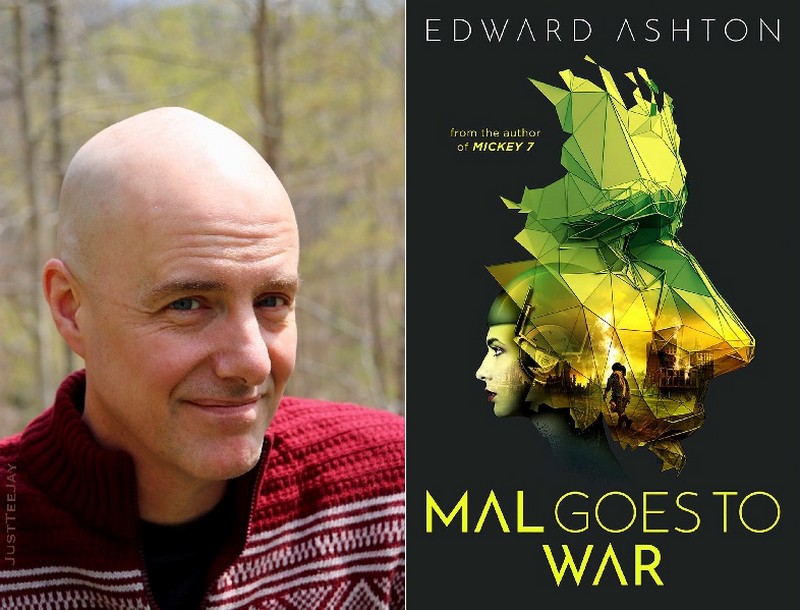 Australian crime author Benjamin Stevenson delivered a great debut in Greenlight and followed that up with the murder mystery Either Side of Midnight. Both featured the flawed, true crime podcaster Jack Quick and centred around “impossible” murders that he has to solve. As well as having a fascinating lead character, these were both well-constructed mystery stories. In his latest book, Stevenson harks back to the golden age of crime – the likes of Agatha Christie and Dorothy L Sayers. In particular he references Ronald Knox who was responsible for writing the ten commandments of detective fiction (one of which now needs to be redacted so nine rules) which Stevenson helpfully includes at the start of the book and that the narrator refers back to from time to time. And of course, he sticks by the Golden Rule of the Golden Age of detective fiction which is to play fair with the reader.
Australian crime author Benjamin Stevenson delivered a great debut in Greenlight and followed that up with the murder mystery Either Side of Midnight. Both featured the flawed, true crime podcaster Jack Quick and centred around “impossible” murders that he has to solve. As well as having a fascinating lead character, these were both well-constructed mystery stories. In his latest book, Stevenson harks back to the golden age of crime – the likes of Agatha Christie and Dorothy L Sayers. In particular he references Ronald Knox who was responsible for writing the ten commandments of detective fiction (one of which now needs to be redacted so nine rules) which Stevenson helpfully includes at the start of the book and that the narrator refers back to from time to time. And of course, he sticks by the Golden Rule of the Golden Age of detective fiction which is to play fair with the reader.
“Everyone in my family has killed someone”, the opening line of the prologue gives a sense of the knowing authorial tone that will drive the book. Ernest Cunningham not only drops this information in the prologue but also sets out on which pages in the text those deaths are going to happen or be described. He then opens with an event that will form the centre of his narrative – the night on which his brother asked him to help bury a body and hide a bag of cash. After that he moves to present and the family reunion being held on a snowy weekend at a lodge in the Australian alps on the day his brother is being released from prison. Soon a body is found in the snow, his brother has been arrested and family secrets revolving around Ern’s father and that night with his brother, start to emerge.
Murder mysteries, particularly those that do play fair with the reader, are like magic tricks. The writer is always trying to throw enough obfuscation around that the reader does not pick up what is actually going on. They are as much about what is not said as what is. Misdirection, red herrings, clues buried in false clues, are all stock in trade. Stevenson understands this well but like a good magician, he will pause from time to time to show the audience his coat and say: See there is nothing up my sleeves, all the while setting up the next sleight of hand. Some may find these knowing winks a little grating but they are all of a piece with the character himself. Stevenson does this while delivering a classic country house murder mystery, complete with a gathering and unmasking in the library.
The Golden Age of crime is clearly back in vogue, or maybe it never left. Kenneth Branagh is trying to reinvigorate some of the best known Agatha Christie titles (Murder on the Orient Express and Death on the Nile). But more successful have been the modern takes on the classic murder mystery, such as Knives Out, in which the characters are aware of these classic tropes. Stevenson takes this path and goes one step further with a narrator who knows how to write an effective murder mystery. Ernest not only sets out the rules, he points out when he is following them:
[Juliette] tapped a finger to her lips…‘Your mum got a twin?’
Was she trying to impress me? That was Rule 10: identical twins must be duly prepared for.
‘Knox would kill me.’
By being reverential Stevenson enables himself to play with the genre and its conventions and also play fair with his readers. It is possible to work out at least who the murderer is before Ernest reveals it but its unlikely any reader will be able to put together the whole story even with all the pertinent clues laid out for them “to keep Ronald Knox happy” including “a dead pigeon with a medal for bravery”. Which all adds up to make Everyone in My Family has Killed Someone not just a solid murder mystery, but a lot of fun.
Robert Goodman
For more of Robert’s reviews, visit his blog Pile By the Bed
Other reviews you might enjoy:
- Everyone on this Train is a Suspect (Benjamin Stevenson) – book review
- Rules for Perfect Murders (Peter Swanson) – book review
- The Waiter (Ajay Chowdhury) – book review

Robert Goodman is a book reviewer, former Ned Kelly Awards judge and institutionalised public servant based in Sydney. This and over 450 more book reviews can be found on his website Pile By the Bed.





